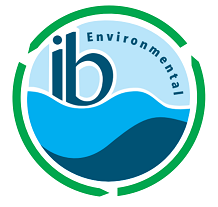Help Save the Planet, and Save Money: Go Trash Free at Lunch
By Gabriel Berahzer
Around seven hundred-seventy-nine billion pounds of trash are thrown away by Americans each year. One of the many contributors to this is disposable food packaging although there are many additional contributors to the buildup. Currently, convenience is the main reason we have disposable items. Specifically, disposable lunches may be more convenient, but people should use reusable food packaging because it can save money, does not add to landfills, and is safer for animals and people.
Paying for single-use items on countless occasions would be far more expensive than buying a reusable item once. Even though this may seem to be the opposite, multiple single-use items are more expensive than one reusable item. Single-use items such as plastic water bottles, of which 1.2 million are being used every second, are consistent contributors to pollution and landfills. This statistic was stated in the article “End Plastic Pollution” published by earthday.org. The article also states, “Americans purchase about 50 billion water bottles per year.” While plastic water bottles are necessary in areas that are devoid of safe drinking water sources, reusable water bottles are often the superior water container, not simply for the environment, but also due to their function. While there are many types of reusable water bottles, the vacuum flask for example, keeps liquids at a constant temperature for longer. Disposable plastic water bottles are only one facet of disposable lunches. Plastic bags, tin or paper wrapping, utensils, straws, and trays are just a few of the examples of single-use items used at lunch.
After a person spends more money on a single-use item, they throw it away. Of course, not all trash is disposed of properly, but even the trash that is disposed of correctly may take centuries to decompose in a landfill. When trash decomposes, it creates toxic fumes. Instead of using disposable utensils and food containers we should use reusable containers to cut down on what ends up in a landfill. Not all trash is left in landfills, according to the Encyclopedia Brittanica in the article “Environmental Pollution.” Due to landfills getting near their capacities, some trash is incinerated which adds to air pollution. While the production of disposable products will not be halted immediately, every minuscule step to producing less trash is valuable and must be taken.
Even worse than trash being hauled to a landfill or incinerated, some trash finds a place in our oceans. Around 14 billion pounds of trash get into the ocean each year. According to earthsky.org, a limited study revealed 386 species of fish have been found to contain trash in their stomachs, 210 of which have commercial relevance. This commercial importance means the 210 species are part of a food chain to which people are connected. In a video published by Monterey Bay Aquarium Research Institute (MBARI), Anela Choy, who works as an oceanographer states her findings. Choy declares that the most common variety of microplastics sampled in the “deep sea” of Monterey Bay was Polyethylene terephthalate (PET). PET is a plastic polymer used in an assortment of single-use plastics and can break down to become infinitesimal and then be digested by oceanic organisms. In the same video, Kyle Van Houtan, the Chief Executive Officer of the Loggerhead Marinelife Center claims, “The great thing about this problem [plastic pollution in the oceans] is that we can solve it. Recycling alone is not the answer. We have to tackle the problem of plastic pollution at its source, and that means using less single-use plastic in our everyday lives.” He does not undervalue recycling in this statement. However, he is explaining that cutting down on single-use plastics is another way to solve plastic pollution.
Although using single-use products is expensive, adds to landfills, and is dangerous for people and animals, a major benefit of single-use items is their convenience. Single-use items are simpler for producers to manufacture and distribute while also being easy for consumers to buy. This combination of convenience for producers and consumers can cause people to overlook the effects and added expense of single-use products. However, trash disposal is becoming less convenient as landfill storage diminishes. When catastrophic effects on food chains and the environment become apparent to people it may be too late. So, we all need to act now by taking one simple step that will hopefully be followed by more around the world. The world needs to take this first money-conscious step and go trash free at lunch now.
Sources:
END PLASTIC POLLUTION by earthday.org staff: https://www.earthday.org/fact-sheet-single-use-plastics/#:~:text=Americans%20purchase%20about%2050%20billion,bags%20are%20produced%20worldwide%20annually. March 29, 2022
Video about plastic pollution: Microplastics in the ocean: A deep dive on plastic pollution in Monterey Bay “ MBARI, June 6,2019
Carro, Mackenzie. “Should You Go Trash-Free at Lunch?” Scope, Mar. 2019, pp. 10–12.
Faculty of Britanica: https://school-eb-com.us1.proxy.openathens.net/levels/middle/article/environmental-pollution/276492
"Environmental pollution." Britannica School, Encyclopædia Britannica, 4 May. 2020. school-eb-com.us1.proxy.openathens.net/levels/middle/article/environmental-pollution/276492
Subscribe Here
Sign up with your email address to receive notices of new blog updates. We post about once per month.

